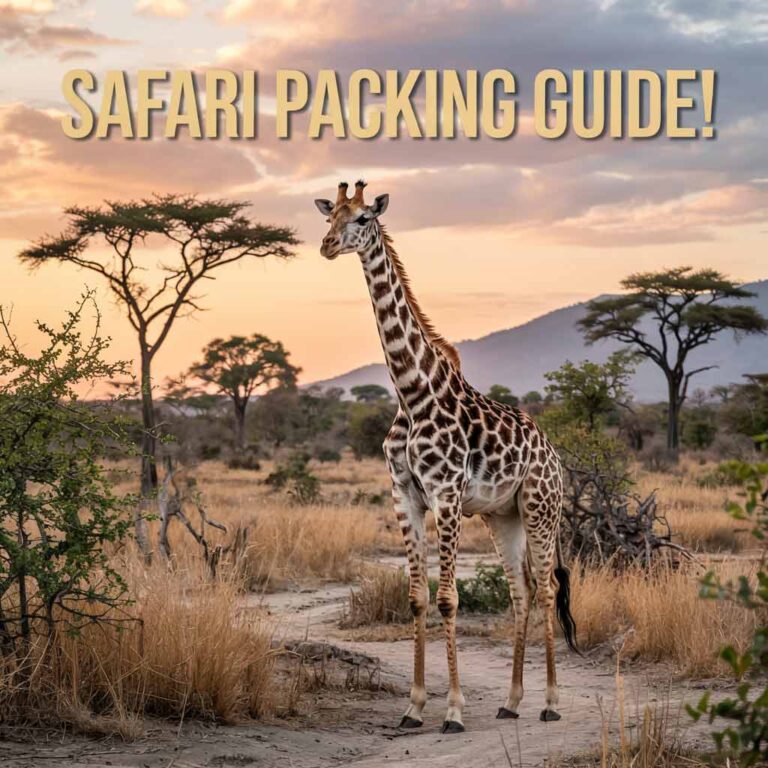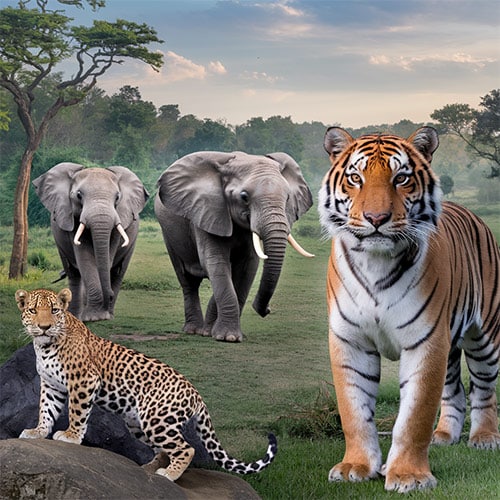Top Wildlife Conservation Efforts in Asia to Inspire Eco-Travelers
Hello! I’m Emma Collins, a solo traveller who loves exploring the wonders of our world. My journey started with a dream to step beyond the familiar, taking me to some breathtaking places. One of my most significant discoveries? The incredible wildlife of Asia and the urgent need to protect it.
Did you know that Asia is home to some of the most endangered species on the planet? From majestic elephants in Thailand to playful orangutans in Indonesia, these animals need our help. During my travels, I’ve seen the remarkable efforts made by dedicated conservation programs. In this article, I’ll highlight Asia’s best wildlife conservation efforts. These initiatives inspire eco-travelers like us to support vital causes. Let’s explore how we can connect with nature while making a difference!
Top Wildlife Conservation Efforts in Asia
The Elephant Nature Park (Thailand)
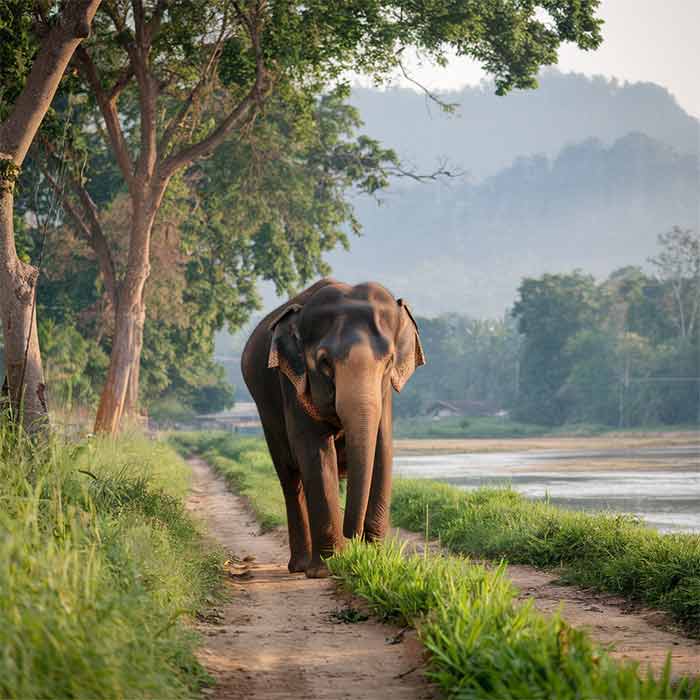
When I first visited the Elephant Nature Park in Chiang Mai, Thailand, I felt like I had stepped into a sanctuary of hope. This rescue and rehabilitation center is a safe place for elephants. They come from logging industries, tourism camps, and abusive situations. Walking alongside these gentle giants, I learned how the park prioritizes their well-being over profits.
The elephants here roam freely, splash in the river, and interact with each other in a natural environment. Hearing their stories affected me deeply. Many of these elephants faced unbelievable hardships before they were rescued. Visitors can help their mission by volunteering, feeding elephants, or visiting to learn about ethical tourism. Trust me, hearing an elephant trumpet in joy for the first time is an unforgettable experience!
Borneo Orangutan Survival Foundation (Indonesia)
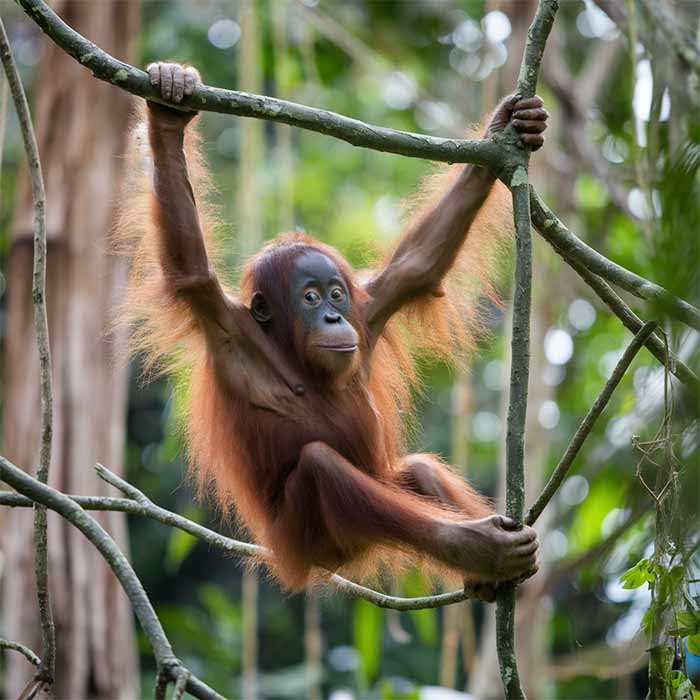
In the thick rainforests of Borneo, I saw something amazing—orangutans swinging smoothly from tree to tree. But I also saw the heartbreaking reality of deforestation and its impact on their habitat. That’s where the Borneo Orangutan Survival Foundation steps in.
This organization rescues and rehabilitates orangutans displaced by palm oil plantations and illegal logging. During my visit, I had the chance to peek behind the scenes at their rehabilitation centre. Young orangutans, often orphaned, are taught survival skills so they can eventually return to the wild. Seeing their tiny hands grasping branches with determination was both heartwarming and hopeful.
I love this foundation. It focuses on long-term solutions, like reforestation. It also works with local communities to create sustainable practices. Suppose you’re an eco-traveller looking to get involved. In that case, they offer volunteering opportunities that let you be part of this vital work. It’s a humbling experience to contribute to protecting these incredible creatures, even in a small way.
The Dujiangyan Panda Base (China)
Visiting the Dujiangyan Panda Base in China felt like stepping into a fluffy dream! As a vast panda lover, I was thrilled to see these adorable creatures up close. This conservation centre is dedicated to protecting the giant panda, a symbol of wildlife conservation worldwide.
At the base, I learned about the fantastic efforts to breed pandas in captivity and eventually release them into the wild. The staff is incredibly passionate, sharing stories about each panda’s journey. Watching the playful cubs tumble around and munch on bamboo made me smile. Did you know that pandas eat around 26 to 84 pounds of bamboo daily? That’s a serious appetite!
The Dujiangyan Panda Base also focuses on educating visitors about protecting panda habitats. When you visit, you can even participate in special programs, like becoming a panda keeper for a day. It’s a fantastic way to support their mission while making unforgettable memories!
Snow Leopard Conservancy India Trust (India)
While trekking in the beautiful Himalayas, I found the Snow Leopard Conservancy India Trust. Snow leopards are incredibly elusive and beautiful creatures, but their populations are dwindling due to habitat loss and poaching. This organization is dedicated to protecting these majestic cats and their mountainous homes.
During my visit, I met local community members vital to the conservancy’s efforts. They help monitor snow leopard populations and educate others about the importance of protecting wildlife. Seeing how empowering local communities can lead to successful conservation was inspiring.
The trust promotes sustainable practices. It encourages herders to protect their livestock and coexist with snow leopards. It was a great reminder that conservation is about finding balance. If you want to help, consider supporting their initiatives or even joining their eco-tours to experience the beauty of the Himalayas while learning about these incredible animals!
Wildlife Alliance’s Pangolin Conservation Program (Cambodia)
In my travels, I learned that pangolins are one of the most trafficked animals in the world. That’s why the Wildlife Alliance’s Pangolin Conservation Program in Cambodia is so important. These unique creatures are often hunted for their scales, which are falsely believed to have medicinal properties.
At the conservation centre, I had the chance to see rescued pangolins being rehabilitated. It was heart-wrenching to learn about their struggles, but the dedication of the staff was genuinely inspiring. They work hard to save pangolins from illegal trade. They also teach local communities how important these animals are to the ecosystem.
I found it fascinating that the program protects pangolin habitats. It does this by working with local farmers. They promote sustainable practices. When you visit, you can support their efforts through donations or by participating in educational tours. It’s a chance to make a difference for these incredible creatures while discovering the beauty of Cambodia.
The Gibbon Rehabilitation Project (Thailand)
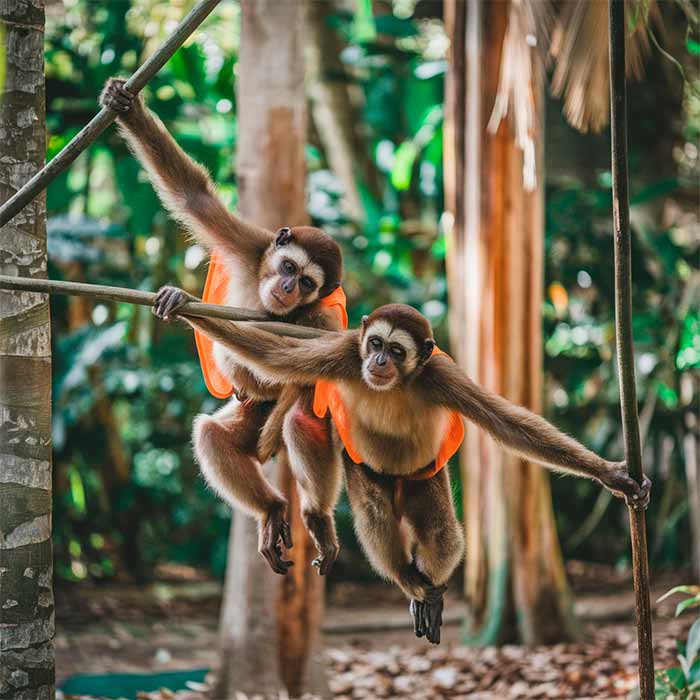
During my trip to Thailand, I found the Gibbon Rehabilitation Project. It quickly became one of my favorite places to visit! This unique initiative is dedicated to rescuing and rehabilitating gibbons kept as pets or used in the entertainment industry.
At the project, I learned the importance of returning these beautiful creatures to their natural habitat. Seeing gibbons swinging from tree to tree was terrific, their joyful calls echoing through the forest. The staff works hard to educate local communities about the impact of the illegal wildlife trade and the need to protect these incredible animals.
A highlight of my visit was the guided tour. I saw gibbons in their natural habitat and heard their inspiring recovery stories. You can support the project by visiting, volunteering, or even adopting a gibbon, which helps fund their care and rehabilitation. Trust me, you’ll leave joy knowing you contributed to something important!
Komodo National Park (Indonesia)
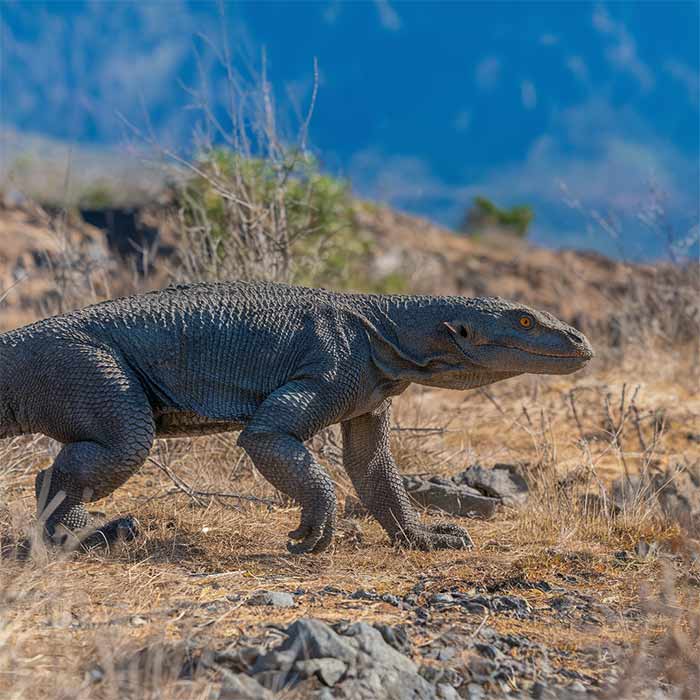
No trip to Indonesia is complete without a visit to Komodo National Park, home to the famous Komodo dragons. These incredible reptiles are the world’s largest lizards, and seeing them in their natural habitat was a thrill!
The park is about dragons and protects diverse marine life and unique ecosystems. Hiking through the rugged landscape, I admired the stunning views and the rich biodiversity around me. The park’s rangers are crucial in monitoring the dragons and ensuring their habitats are protected from threats like poaching and habitat loss.
Visiting Komodo National Park is an experience like no other, and by choosing to explore this area responsibly, you can help support conservation efforts. Every visit—hiking, diving, or just taking in the views—helps protect this unique ecosystem.
Kinabatangan River Conservation Area (Malaysia)
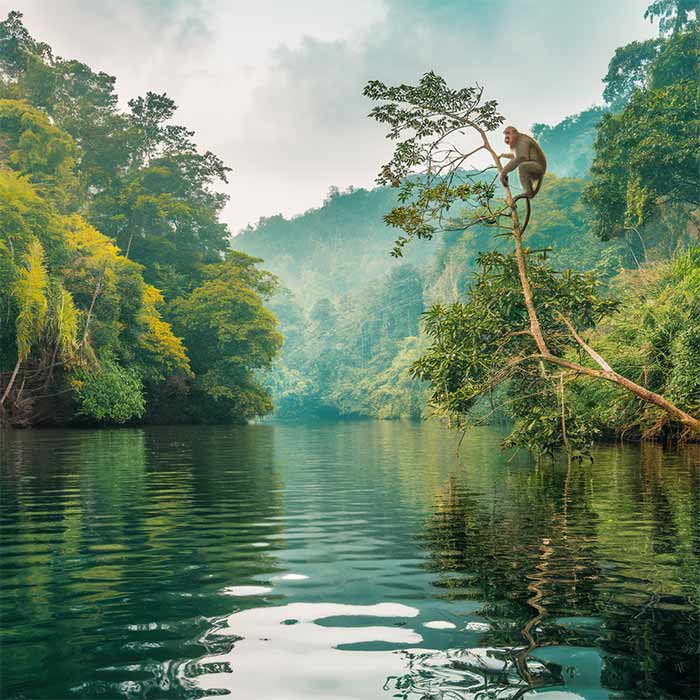
As I floated down the Kinabatangan River in Malaysia, I was surrounded by lush rainforests teeming with wildlife. This area is a biodiversity hotspot, home to orangutans, proboscis monkeys, and even pygmy elephants! The Kinabatangan River Conservation Area is dedicated to preserving these incredible species and their habitats.
During my river cruise, I spotted families of orangutans swinging through the trees. I heard the distinctive calls of the proboscis monkeys. It felt like stepping into a nature documentary! The conservation area works closely with local communities to promote sustainable practices that protect the river and its wildlife.
How Eco-Travelers Can Support Wildlife Conservation in Asia
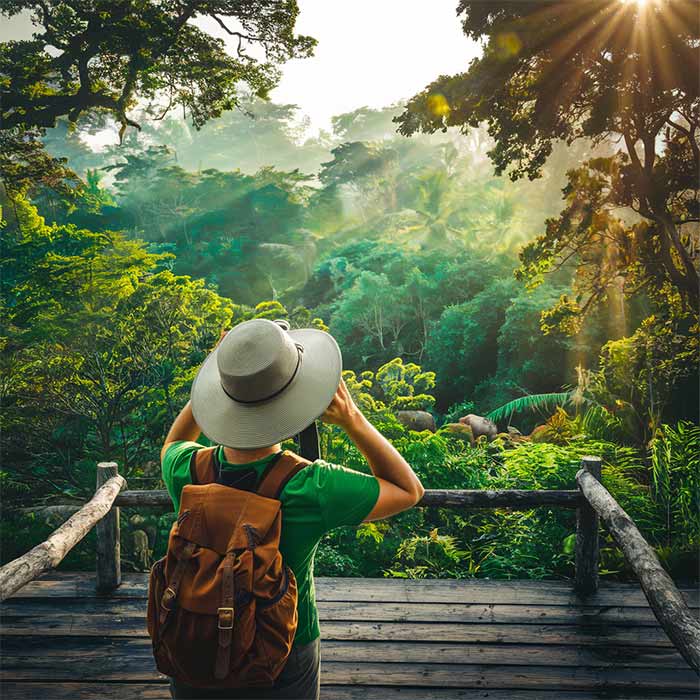
Volunteer Opportunities with Conservation Programs
Eco-travelers can truly help wildlife conservation in Asia. They can volunteer with local programs to make a real difference. There are countless opportunities available, whether you want to work with elephants in Thailand or help rehabilitate orangutans in Indonesia.
While volunteering at the Elephant Nature Park, I fed elephants, cleaned their enclosures, and learned about their care from the staff. It was a rewarding experience that allowed me to connect with these incredible animals while contributing to their well-being. Plus, I met fellow travellers who shared my passion for wildlife conservation, and together, we formed lasting friendships.
Many conservation programs welcome short-term volunteers, making it easy for travellers to get involved. Just research the organization beforehand to ensure they follow ethical practices. Dedicating even a few days to your volunteering trip can make a meaningful impact and create unforgettable memories!
Responsible Travel Practices
Travelling responsibly is another key way to support wildlife conservation in Asia. This means being mindful of your choices and their impact on the environment and local communities. Simple actions can make a big difference!
For instance, I always choose eco-friendly accommodations that prioritize sustainability. Many hotels and lodges in Asia focus on conservation. They use renewable energy, cut down waste, and support local communities. By staying at these places, I know that my travel dollars are helping to protect the environment.
Additionally, I choose operators that prioritize animal welfare when participating in tours or activities. Avoid attractions that exploit wildlife, such as elephant rides or shows. Instead, look for experiences focusing on education and conservation, like guided nature walks, wildlife observation, or community-led initiatives.
Being a responsible traveller helps protect wildlife and enriches your experience. You’ll gain a deeper understanding of the places you visit and the challenges they face, making your journey even more meaningful.
Donating or Partnering with Conservation Organizations
If you want to help wildlife conservation but can’t volunteer, think about donating. Support trusted organizations that protect endangered species. Many of these groups rely on donations to fund their essential work, from rescue and rehabilitation to habitat preservation.
During my travels, I’ve donated to several organizations I believe in, like the Borneo Orangutan Survival Foundation and the Snow Leopard Conservancy. Knowing that my contributions help protect these incredible animals and their habitats gives me a sense of purpose.
You can also consider partnering with conservation organizations for special projects. Some groups offer opportunities to sponsor animals or fund specific initiatives, allowing you to directly contribute to their efforts. This way, you can stay connected to the cause and receive updates on the impact of your support.
Together, we can make a real difference in the lives of wildlife in Asia. Whether through volunteering, responsible travel, or financial support, every action counts in the fight for conservation.
The Future of Wildlife Conservation in Asia
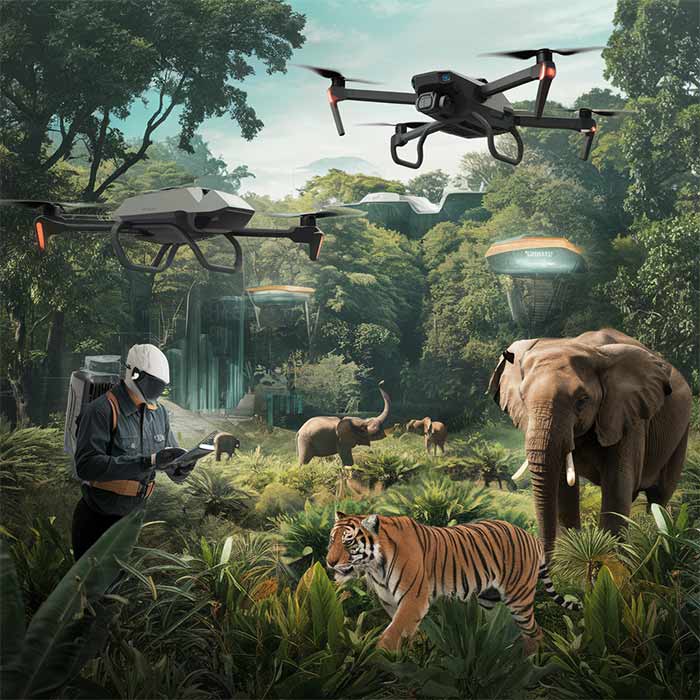
Innovative Approaches to Conservation
I learned a lot about wildlife conservation. I was inspired by how organizations find new ways to protect endangered species and their homes. One exciting trend I noticed is the use of technology in conservation work. From camera traps that monitor wildlife populations to drones that help survey and protect vast areas, technology is transforming how we approach conservation.
During my visit to the Kinabatangan River Conservation Area, I learned about a project using GPS collars to track the movements of pygmy elephants. This data helps researchers understand their behaviour and habitat needs, which is crucial for effective conservation planning. It’s amazing to see how technology can enhance our understanding of wildlife!
Another innovative strategy is community-based conservation, where local people actively protect their environment. Empowering communities makes conservation efforts more sustainable and effective. When people have the right tools and knowledge, they can better manage their resources. I saw this firsthand at the Snow Leopard Conservancy India Trust, where local herders play a vital role in monitoring snow leopard populations.
These innovative approaches show that the future of wildlife conservation in Asia is bright, fueled by creativity, collaboration, and a commitment to protecting our planet.
The Role of Eco-Tourism in Shaping the Future
Eco-tourism is an essential part of the future of wildlife conservation in Asia. As travellers, we can make choices that support conservation efforts and promote sustainable practices. I’ve experienced firsthand how eco-tourism can positively impact local communities and wildlife.
When I visited the Elephant Nature Park, I saw how eco-tourism directly supports the care of rescued elephants. The funds generated from visitors help provide food, medical care, and rehabilitation for these gentle giants. This model benefits the elephants, creates jobs, and supports the local economy.
Moreover, eco-tourism encourages awareness and education about wildlife conservation. When travellers engage with local conservation programs, they leave with a greater understanding of wildlife’s challenges. This awareness can inspire them to advocate for conservation efforts in their own communities.
As more travellers seek authentic and responsible experiences, eco-tourism is set to grow. It lets you discover Asia’s beauty and support conservation efforts. By choosing eco-friendly tours, staying at sustainable lodges, and participating in local conservation projects, we can all play a part in shaping a positive future for wildlife.
Conclusion
Reflecting on my journey through Asia’s wildlife conservation efforts fills me with hope. From the Elephant Nature Park to the Snow Leopard Conservancy, dedicated people work hard to protect our planet’s amazing biodiversity.
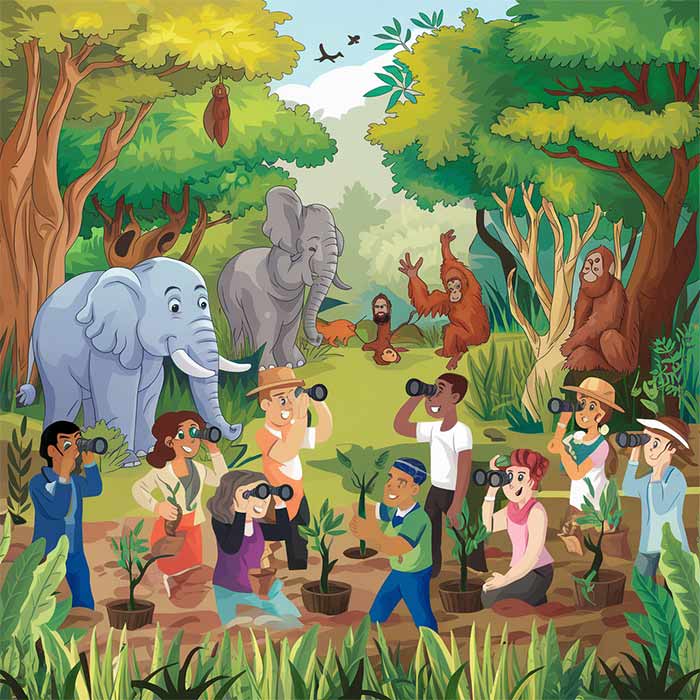
We’ve explored remarkable initiatives, like the Borneo Orangutan Survival Foundation and the Gibbon Rehabilitation Project, and discovered how eco-travellers can support these causes through volunteering, responsible travel, and donations.
The future of wildlife conservation in Asia is bright, fueled by innovative approaches and eco-tourism growth. By travelling responsibly, we can positively impact and help ensure that these amazing animals continue to thrive. Let’s embrace the spirit of eco-travel and make a difference together—one journey at a time! 🌍💚



